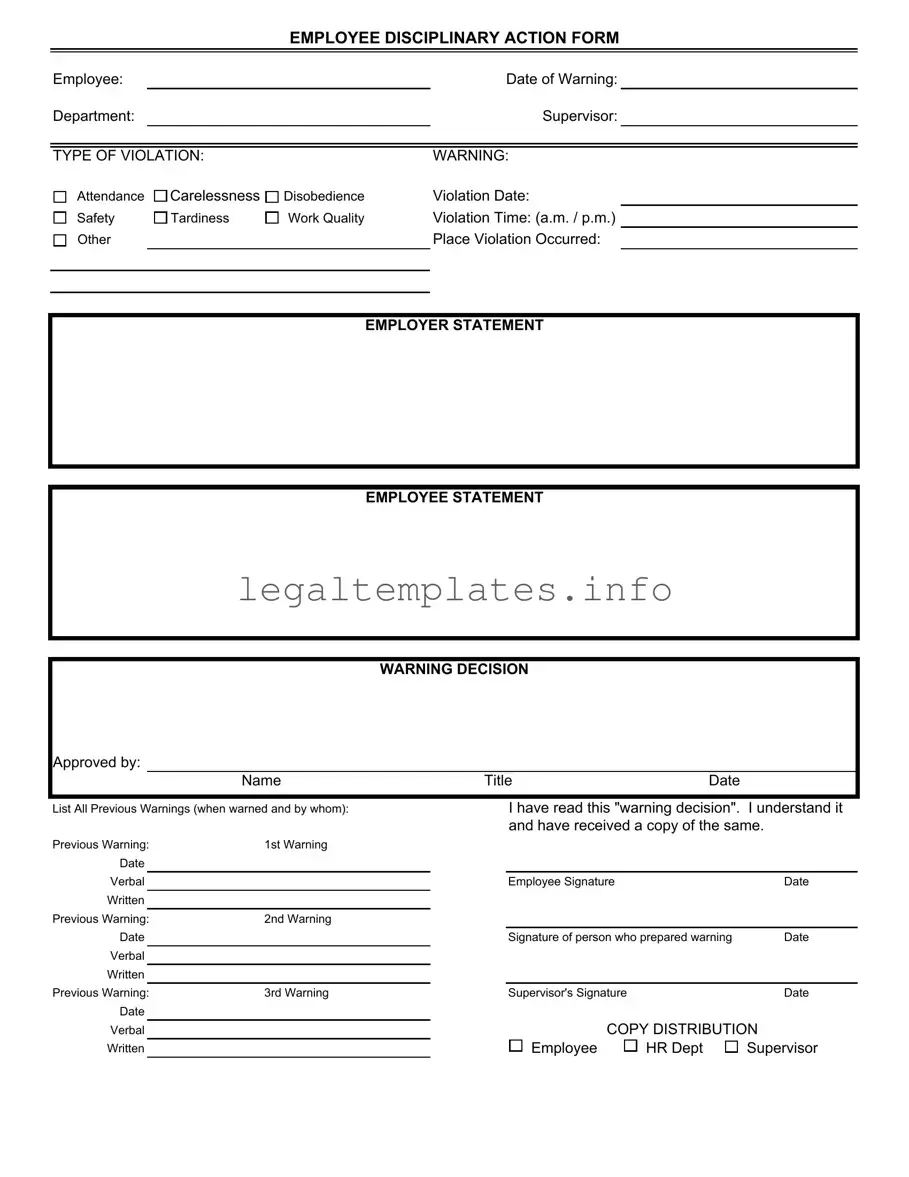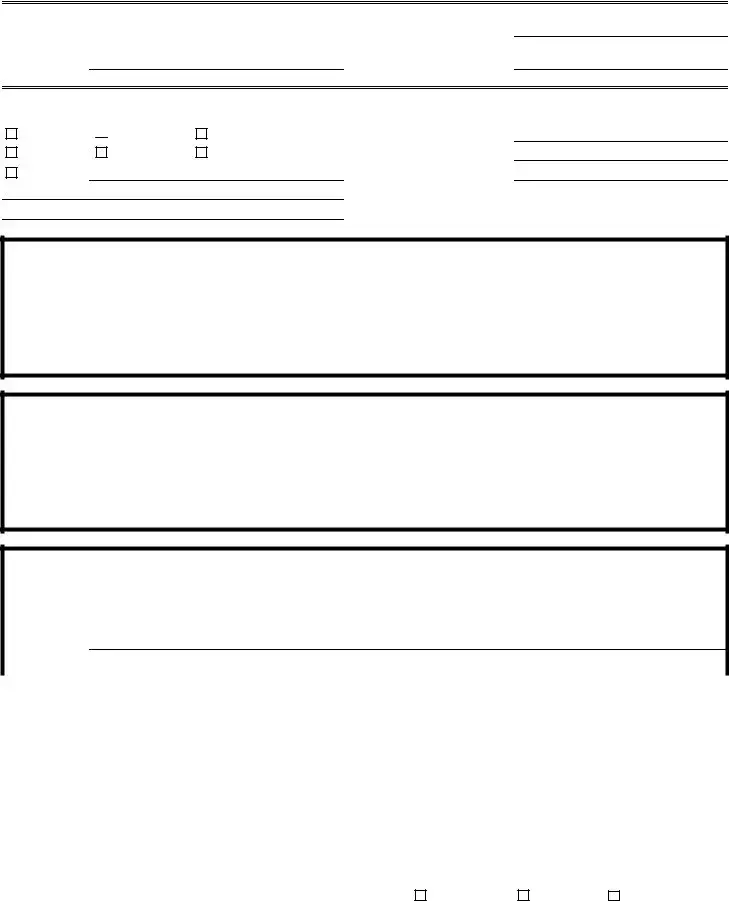What is a Disciplinary Action Form and when is it used?
A Disciplinary Action Form is a document used by an employer to record a violation of company policy by an employee. It is used when an employee has committed a violation such as attendance issues, carelessness, safety infractions, tardiness, or other breaches of workplace rules. The form includes spaces for detailing the type of violation, the date and time it occurred, and statements from both the employer and the employee. It is typically used as part of a formal process to warn the employee about their conduct and to document the steps taken by the employer in response to the violation.
What information is required on a Disciplinary Action Form?
The form requires several pieces of information, including the employee's name, the date of the warning, department, and supervisor's name. It also requires specifics about the violation, including the type of violation (such as attendance, carelessness, or safety), the date and time of the violation, and where it occurred. Additionally, there is space for an employer statement, an employee statement, and the warning decision, including approvals and a section for listing any previous warnings the employee has received. The form is finalized with signatures from the employee acknowledging receipt and understanding of the warning, as well as signatures from the supervisor and the person who prepared the warning.
How does the Disciplinary Action Form process work?
When a violation occurs, the supervisor or HR department will fill out a Disciplinary Action Form, detailing the nature of the violation, and gather any necessary additional documentation or statements. The employee is then given the opportunity to review the form, add their own statement, and discuss the circumstances of the violation with their supervisor. After the discussion, the warning decision is made, often requiring approval from a higher authority within the company. Finally, all parties involved sign the form, indicating their acknowledgment and understanding of the situation. The form is then filed, with copies distributed to the employee, HR department, and the supervisor, serving as an official record of the disciplinary action.
Can an employee refuse to sign a Disciplinary Action Form?
Yes, an employee can refuse to sign a Disciplinary Action Form. However, refusing to sign does not negate the disciplinary action or the validity of the violation. Typically, if an employee refuses to sign, it is noted on the form by the supervisor or HR representative, indicating the employee's refusal. The purpose of the signature is primarily to acknowledge that the employee has received and understood the warning, not necessarily that they agree with the disciplinary action taken against them. Even if an employee refuses to sign, the form still serves as a record of the attempt to communicate the disciplinary action to the employee.


 Carelessness
Carelessness